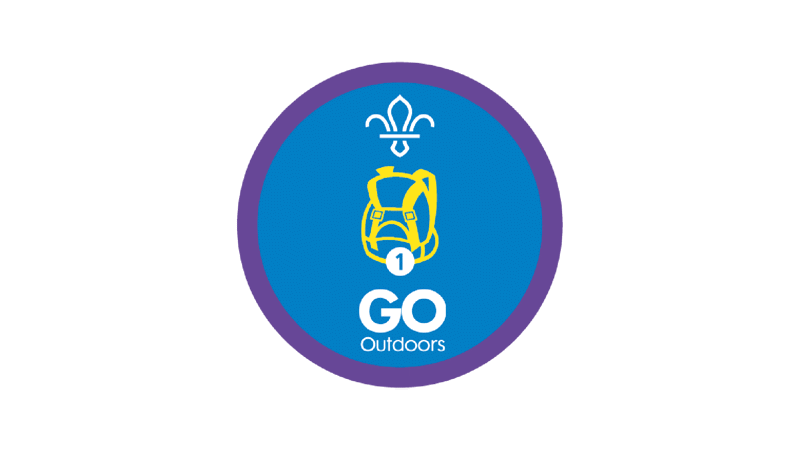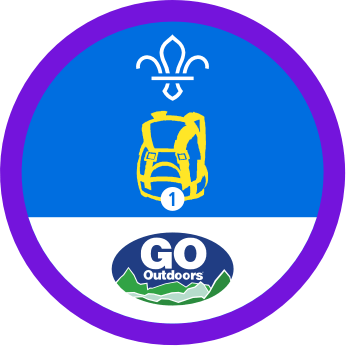
Go on a What3Words walk
You’ll need
- Scrap paper
- Pens or pencils
- Compass
- OS maps
- Printed route card templates
- Mobile device with internet connection
- Hiking gear, including suitable clothing and equipment, snacks, water and first aid kits
- Challenge equipment, as needed

Before you begin
- For this activity, each group will need at least one mobile device that’s able to download and is compatible to use the what3words app. This may require a Wi-Fi connection in a secure location, such as the meeting place or a young person’s home, or the use of mobile data. The app doesn’t need an internet connection to run once downloaded and set up, though it does require location services to be enabled. Be aware that running the app with location services constantly will use more battery life.
- Ideally, you could run this activity across two sessions. You could find a suitable location and plan the hike in one session, then walk it in the next. Use the first session to think about distances, time and how many checkpoints you’ll need. If you’re short of time and unable to do this, plan out the locations for the what3words app and the hike itself before the session.
- Print some route cards for the groups in advance.
- Don’t forget to risk assess your checkpoint challenges too, not just the hike, especially if you’re using stoves or cooking equipment. You’ll need appropriate adult supervision throughout, and you may also need an Adventurous Activities permit, depending on the terrain. Check that a suitable InTouch process is in place and that all planned routes are risk assessed from start to finish. Here’s some hillwalking-specific guidance to help.
To watch in full screen, double click the video
- What3words is a really simple way to talk about a location. They’ve assigned each 3 m square in the world a unique three-word address that’s easy to say and share.They’re as accurate to use as GPS coordinates.
- In an emergency, you can use a three-word address to talk about places that are hard to describe.
- Find out more and download the app from the webpage here.
Plan your hike
- In your planning session, everyone should get into groups of between four and six people. Each group will need at least one mobile device with the what3words app installed. They’ll also need writing materials, paper and a map.
- Introduce the hiking challenge. Tell everyone the start and end points of the hike, the distance and the time it’ll take, as well as the number of legs the journey will be split into. Groups should write this information down.
- Groups should now use their map to plot a suitable route for the hike. They should mark suitably spaced checkpoints for each leg, and use the what3words app to find the three-word addresses for each checkpoint location. Groups should write these down.
- Once each group has a list of checkpoints, they should think up some challenges to complete at each one. Groups should write down their agreed-upon list of checkpoints and challenges on a separate piece of paper. Hand these into the person leading the activity when they’re done.
- Make a human pyramid
- Demonstrate first aid skills, like making a sling
- Send a message via Morse code or semaphore, which could reveal the next clue
- Spell out a word using team members or kit
- Demonstrate map skills, like taking a compass bearing
- Perform a campfire song
- Make a hot drink using a lightweight stove
- Other teamwork challenges like our Team pipe dream activity
Get outside
- In your hiking session, everyone should split into their groups again. If the person leading the activity prepared the checkpoints and what3words locations, give each group their what3words location for the starting point and the location or clue for their first checkpoint. Remind everyone that there’s a challenge for them to complete at each checkpoint, with points to be won. If the groups made their own checkpoints and challenges (following the preceding instructions), everyone should follow the route set out by someone else’s list of checkpoints and challenges, so that each group is following a different route.
- Everyone should work together in their groups to figure out the location of their first checkpoint. Do this by using the what3words app to find the location and then use the OS map and compass to plot the first leg of the hike.
- Make sure each group has a blank route card and writing materials. They’ll need to fill in the information for each leg of the hike as they go.
- When everyone’s planned their route, they should begin the first leg and walk to the first checkpoint.
- Upon arrival at the first checkpoint, each group should complete their challenge. Then they should use the what3words app to take a photo or video and tag the location. A copy of this from each checkpoint should be saved, so that they can count up their points at the end.
- Then, each group should be given the next clue to work out the location of the next checkpoint and plot their route there. The map should be used to plot the route and the next leg should be added to the route card. Continue walking to the next checkpoint and complete that challenge, repeating this until each group reaches the end of the hike.
- When everyone gets to the end, add up the points from the saved photos and name a winner. Bonus points could be awarded for the fastest routes plotted, efficient teamwork or for any group who can make a poem out of the what3words address words. Everyone should share their photos too!
Reflection
Everyone had to work together in their groups, with each person taking responsibility for a role. Some people needed to take the lead in challenges they were good at, some needed to plan the routes to each checkpoint, some needed to use the what3words app to tag each location and everyone needed to step forward when their strengths could be brought into play. It wasn’t about who the first team back was, but who got the most points. Did this make the challenge easier or harder? Was everyone able to appreciate taking their time outdoors with friends on a hike that wasn’t a race? Did that make the overall experience more fun?
Safety
All activities must be safely managed. You must complete a thorough risk assessment and take appropriate steps to reduce risk. Use the safety checklist to help you plan and risk assess your activity. Always get approval for the activity, and have suitable supervision and an InTouch process.
- Hiking and walking
Follow the guidance for activities in Terrain Zero, or the guidance for each the adventurous activity.
- Online safety
Supervise young people when they’re online and give them advice about staying safe. Take a look at our online safety or bullying guidance. The NSPCC offers more advice and guidance, too. If you want to know more about specific social networks and games, Childnet has information and safety tips for apps. You can also report anything that’s worried you online to the Child Exploitation and Online Protection Command. As always, if you’ve got concerns about a young person’s welfare, including their online experiences, follow the Yellow Card to make a report.
- Phones and cameras
Make sure parents and carers are aware and have given consent for photography.
- Outdoor activities
You must have permission to use the location. Always check the weather forecast, and inform parents and carers of any change in venue.
- Depending on the skill or age level of your group, you should alter the difficulty of the hike terrain and distance, the challenges themselves and how long they take, or how the what3words location clues are used.
- Groups could be given the completed list of checkpoints to complete the route card before they set off. For those new to this sort of activity, you could go to a park or field for the group to use the app for a scavenger hunt or ‘bases’ activity. This could involve them doing less navigating and instead picking up as many points as they can in the time limit.
- This activity could be run in an urban or rural setting. Make sure all terrains and distances are suitable for those in your group taking part.
- Other methods of travel, like canoeing or cycling, can count towards the Hikes Away Staged Activity Badge, if these are preferable. More information on running these activities can be found in the Scouts A-Z.
All Scout activities should be inclusive and accessible.
Depending on the length of your hike and where you’re walking, you could also adapt this activity to work towards stage five of the Navigator Staged Activity Badge by navigating the route only using a map, or only a compass and pacing, or even by planning a course of at least six legs to meet requirement one. If you try out some different navigation techniques, you could work towards other parts of the badge too. You could also find out more about how GPS signals and satellites work and have a go at our ‘Satellites in flight’ activity as part of the Scouts Astronautics Activity Badge.
Young people had the opportunity to come up with their own challenges and routes to test one another in the planning stages. On the hike, they had the chance to demonstrate their ability to work as a team, problem solve, multi-task and show some creativity too!
